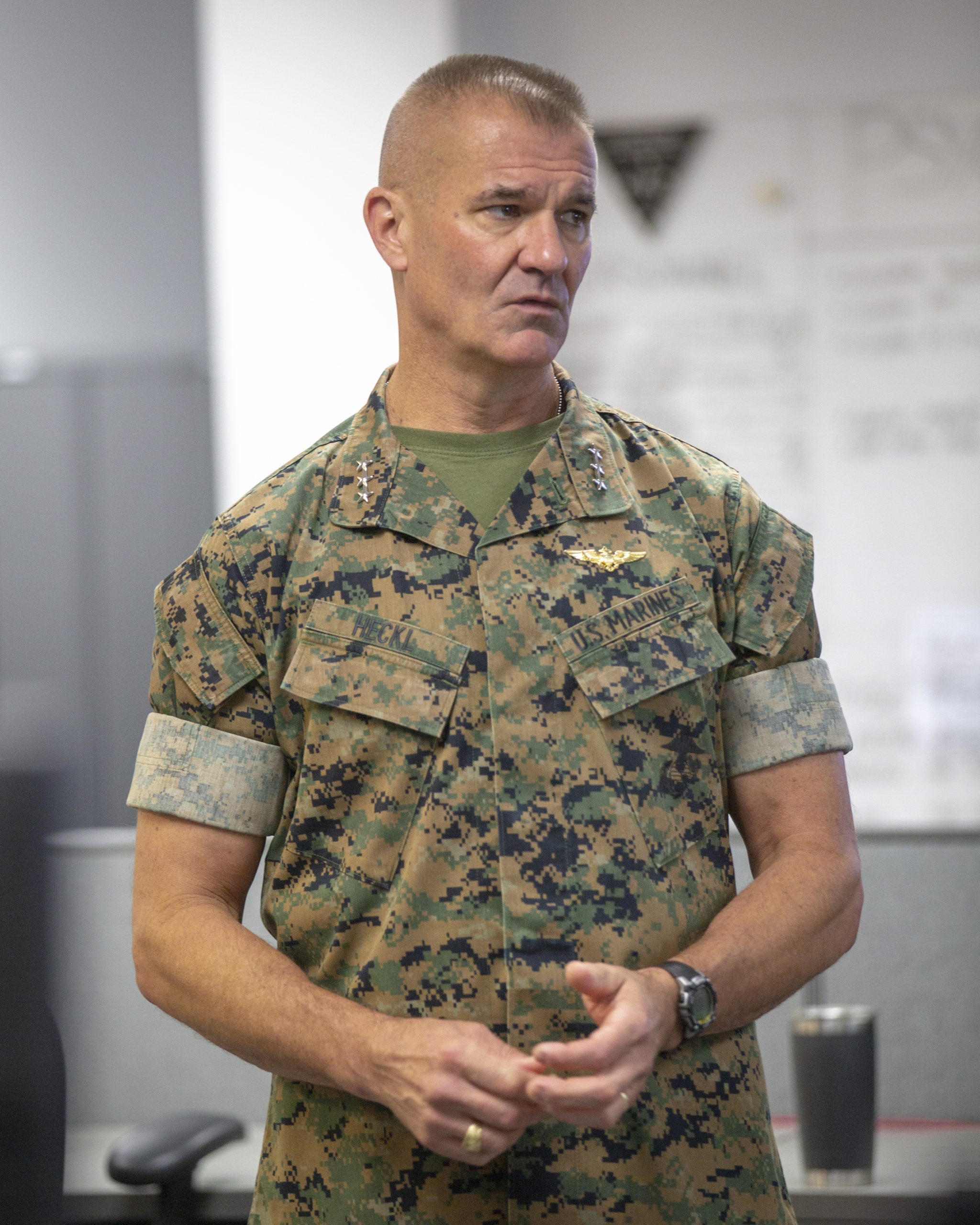Lt. General Heckl on Shaping a Way Ahead for I MEF
Prior to my visit to MARFORPAC in August 2021, I had a chance to talk with the CG of I MEF, Lt. General Karsten Heckl.
I last talked with him when he was the CG of 2nd Marine Air Wing. Before that, I talked with him Norway when he was COS STRIKEFORNATO, and before that when he was the Deputy to the Deputy Commandant of Aviation.
We started by discussing how he saw the challenge. He underscored that a key part of understanding the nature of the threat environment is to understand the nature of the Chinese regime. Although this can be labelled great power competition, in the Pacific the great power is run by leaders of the Chinese Communist Party. They are communists, they are authoritarians, and they wish to play by their rules.
It is not simply a military challenge but a political-military and cultural one as well. Certainly, a key part of working the Marine Corps role in the Pacific is political-military as well as a narrowly warfighting role.
We often hear about hybrid war and the gray zone; with a Marine Corps well respected in the Pacific and working relationships with partners and allies in the region, the Marine Corps can play a more effective role as a crisis management force.
Lt. General Heckl underscored that a major challenge facing I MEF was enhancing its ability to operate forward or west of the international dateline. “I have a 7,000 nautical mile physics problem, but we’re doing a lot of things already that have us operating West of International Dateline.”
He noted that the strategic shift provided in the defense guidance to focus on the great power competition is a key driver for change, but the transformation necessary to do so needs to be accelerated. This includes the question of augmenting Indo-Pac exercises as well. He noted that this Fall the next iteration of Freedom Banner, an exercise run out of Japan.
Clearly, the Marines like the rest of the joint force is working through how best to deter the Chinese and to engage in operations over an extended area or over an extended battlespace. This is clearly a work in progress. He noted that I MEF has a great working relationship and is enhancing integration with Third Fleet but both on located on the West Coast of the United States. How best to operate forward?
This entails the question of how to do effective blue water expeditionary operations. This entails the question of how to work the Pacific geography with allies and partners to get the maximum political-military and combat effect.
It is also a question of taking advantage of new ways to operate as well. For example, as seen in the Black Widow Exercise in the North Atlantic, the Marines can certainly contribute to ASW operations. How might the Marines assist more effectively the Navy in sea denial and sea control in the Pacific?
A key limitation for the Marines in the Pacific for sure is that size, and state of the amphibious fleet. It is clear that operating at sea and from the sea with Marine Corps air assets provides very agile and powerful force insertion assets to deliver crisis management effects.
But the decline in the numbers of amphibious ships is a critical problem, and how best to rebuild the fleet is a work in progress.
But when I was last in Hawaii, the MARFORPAC team was focused on ways to expand the amphibious force in the Pacific with allies, or to enhance what they referred to as “amphibiosity.”
That was 5 years ago, and now allies are indeed expanding their amphibious forces, in South Korea, Japan and Australia.
And allies are adding F-35Bs and Ospreys to their force.
How can the USMC best leverage this upsurge in capabilities?
It makes little sense to further devolve the U.S. amphibious fleet as allies themselves see greater utility in this force for crisis management and warfighting.
As Lt. General Heckl put it: “My biggest concern right now is amphibious shipping and connectors.” And in this sense, the expeditionary force leverages what the Navy and Marines have now, but creative thinking about how to build out an amphibious fleet is clearly needed, but to build actual integrable assets as well.
In my co-authored forthcoming USNI book, we argue that shaping a kill web enabled maritime force can build upon re-imaging how to leverage the amphibious force.
We argued: “The evolution of the amphibious force and shaping amphibious task forces can contribute significantly to expanded capabilities for maneuver warfare at sea.
“By leveraging the new air capabilities, adding new defensive and offensive systems on the fleet, and expanding the C2 and ISR capabilities of the fleet, the contribution of the amphibious task force can be reimagined, redesigned and thereby enhance the combat power of the US Navy in maneuver warfare at sea.”
As Lt. General Heckl put it forcefully: “The challenge seen from I MEF is that for us to be effective we need to be credible.
‘To be credible, we need to be forward with credible forces.
“We are focused on positioning the MEF to be in a position to be an effective deterrent force.”
I’ve looked at the Marines as the initial crisis management force.
But what does that actually mean in today’s Pacific?

